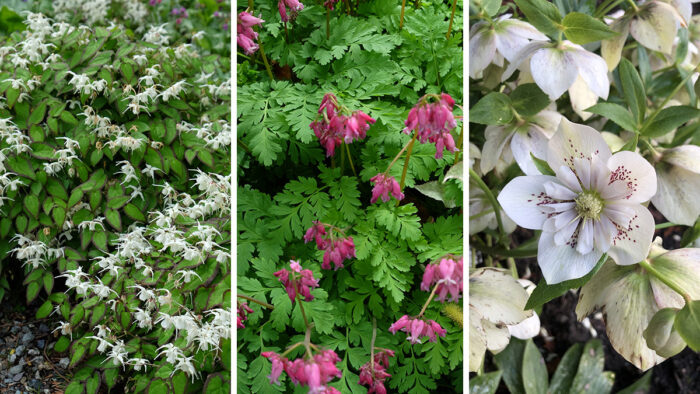
Designing spring borders is always a little challenging. Some plants are stubborn and refuse to bloom at the same time every year. Other plants are just emerging and are not partial to competition. (I uprooted sweet woodruff [Galium odoratum, Zones 4–8] from my garden for that very reason.)
When planning your design, keep the rest of the year in mind
A spring border is one of the most important parts of the garden to plan. You want to be sure to plant things that look amazing in the spring without leaving big, blank spaces for the rest of the year. We have all seen a huge swath of spring bulbs in a garden that looks great for a couple of weeks before becoming a sea of dying foliage and then a blank space. If you go to the nursery in the spring, you will only find things that are blooming at that time. The sales factor in the nursery is all about bloom. With planning and searching, you can buy things that either bloom a little later or will be in the nursery later in the year. The spring border should have some interest in the summer and autumn as well. Evergreen pieces will provide a totally different look in the winter when the perennials are dormant and deciduous shrubs are bare. Remember that plants with variegated foliage can add to the color combination of the design as well as their blooms.
Decide how much space you want to devote to nonspring plants
If half of the plants in your bed are spring-interest plants and the rest of the plants bloom at different times of the year, it’s more of a mixed border than a spring border. A beautiful spring border will have a great impact when the garden is not very full but may look more muted later in the year. In the summer when everything is lush and bountiful, those spring stars would be lost in the abundance. Plan ahead for the kind of display you want to have. Below I’ll describe the three layers of a simple border design for a high spring impact.
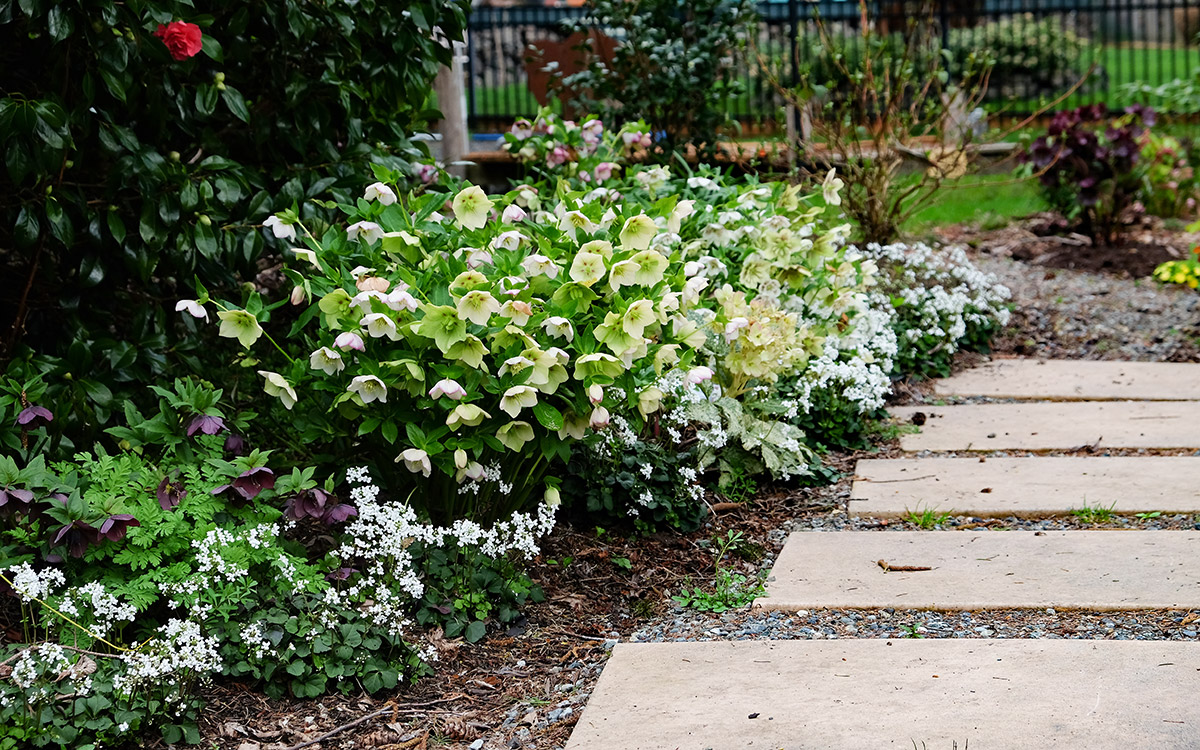
Front layer: Three waves of white blooms act as ground covers
I enjoy plants that are bright and that stand out on our gray early spring days. This design has bright reds and pinks in the background that gradually turn purple as the season progresses.
The front of the border is planted with one of my favorite ground covers, three-leaved cardamine (Cardamine trifolia, Zones 5–8). This evergreen reaches 6 inches tall in shade and can grow in nearly any soil type. The sweet white flowers come up above the foliage in a rush of bloom early in the year. It continues to bloom over the remainder of the summer and fall. This slow spreader is slug-proof (a huge plus in my garden) and is easy to care for. By now, snowdrops (Galanthus nivalis, Zones 3–8) have finished blooming, and only their strappy foliage remains. A snowy epimedium (Epimedium × youngianum ‘Niveum’ Zones 5–9) is throwing airy white blooms and new purple foliage to cover the dying snowdrop foliage. This cultivar is not as aggressive as some epimediums in our area. Using well-mannered plants that grow well with others is key in borders like these.
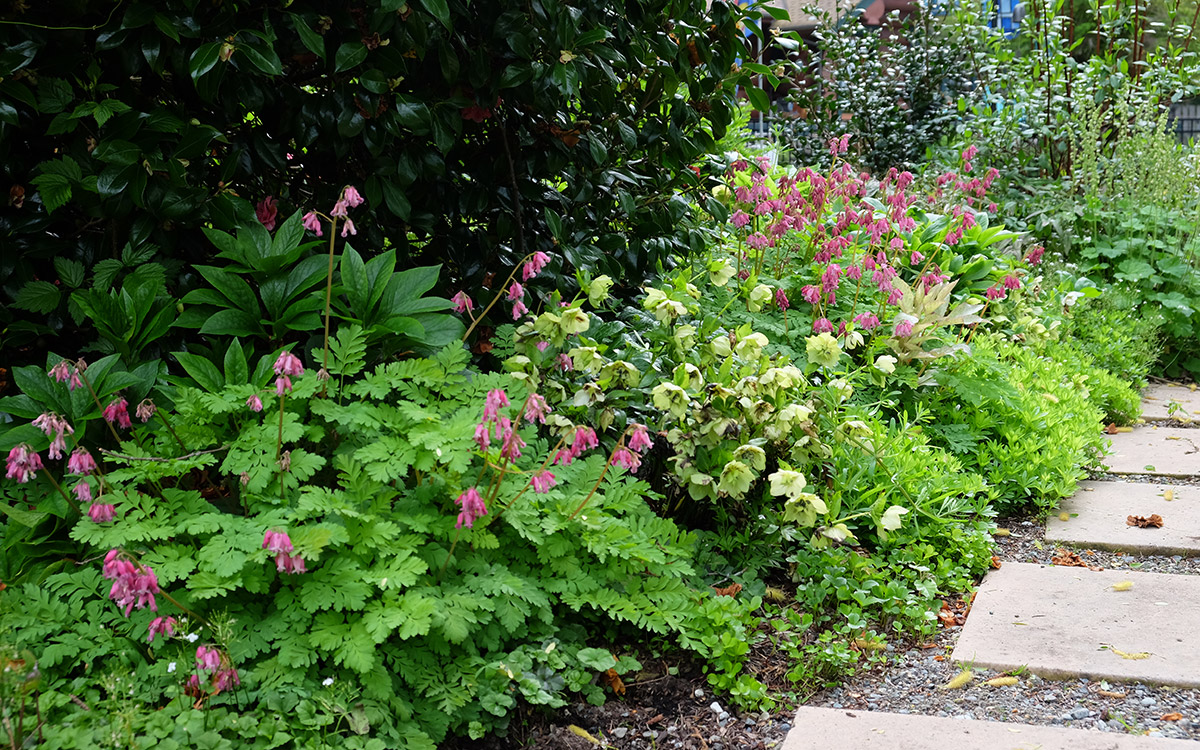
Middle layer: Hellebores and bleeding heart add height, drama, and flower power
The second layer uses a couple of different types of hellebores (Helleborus spp. and cvs., Zones 4–9) and other perennials to complement the white blooms of the ground covers. ‘Pacific Frost’ hellebore (H. argutifolius ‘Pacific Frost’, Zones 5–8) has variegated green-and-white foliage, so it looks great after it has stopped flowering. I also included ‘Florence Picotee’ hellebore (H. ‘Florence Picotee’, Zones 3–9), which is double white, near the back of the middle layer, and ‘Tiffany’ hellebore (H. ‘Tiffany’, Zones 5–9), which is single white, in the center of the middle layer. Behind ‘Tiffany’ is an amazing green-flowered hellebore called ‘Jade Star’ (H. ‘Jade Star’, Zones 3–9). All hellebores are great in shade or partial shade areas with adequate water during dry months. As this planting evolves in later spring, the purple and red colors will start to show. ‘Bacchanal’ bleeding heart (Dicentra formosa ‘Bacchanal’, Zones 3–9) will have dark purple-red blooms, new foliage on the ‘Pacific Frost’ hellebore will be blushed with purple, and new leaves of snowy epimedium will also become a variegated green and purple.
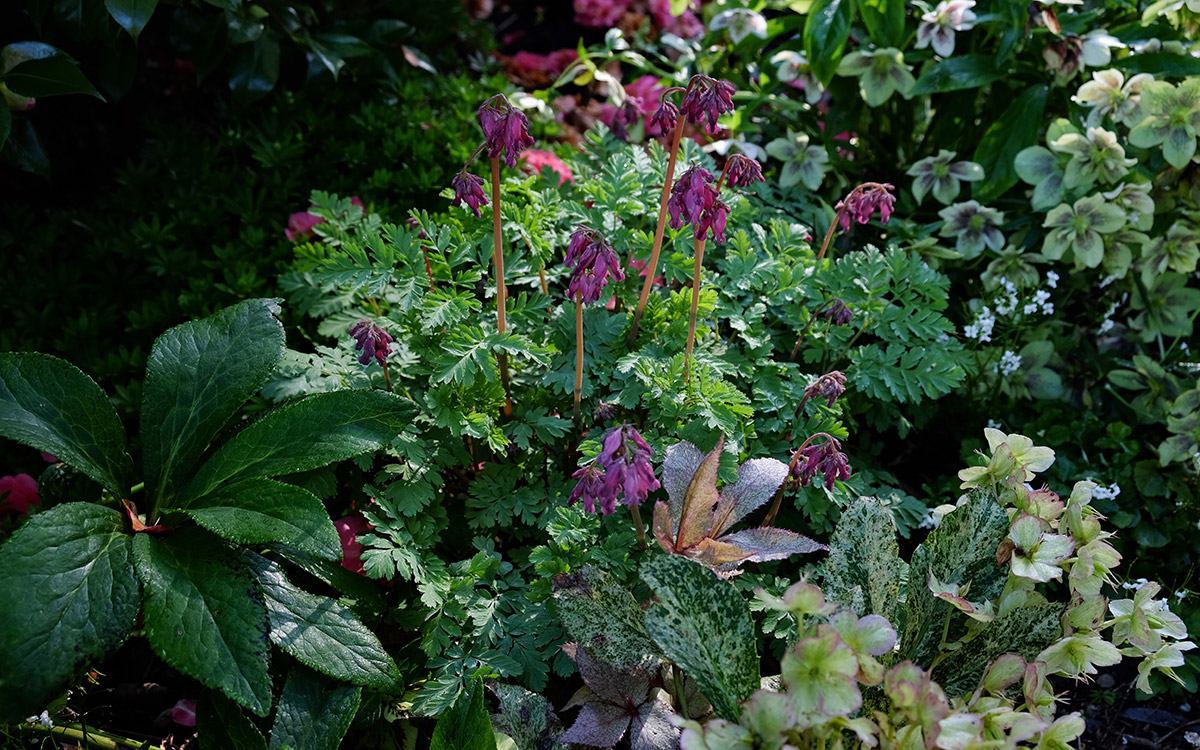
Back layer: Large shrubs provide structure, screening, and late-season interest
At the back of the border is a large, ancient, pink-blooming camellia (Camellia cv., Zones 6–10). While I’m not a big fan of pink, it was here when I purchased the house, and it provides important screening from a neighbor. Because I decided to leave it, I built the rest of the spring border around it. Nearby, a ‘Yuletide’ camellia (C. sasanqua ‘Yuletide’, Zones 7–10) blooms next to a Golden Crane® hydrangea (Hydrangea angustipetala ‘MonLongShou’, Zones 6–9). Both of these shrubs take shade. ‘Yuletide’ camellia blooms in late fall and early winter, and Golden Crane® hydrangea blooms in late spring and through the summer. The camellias and hydrangea serve as background for the rest of the bed. As spring turns into summer, the greens take over. In the lower areas of the bed, the variegated leaves of ‘Pacific Frost’ hellebore and the blooms of ‘Bacchanal’ bleeding heart are beautiful, while the hydrangea blooms. Past spring it’s a muted palette, but still full and lush.
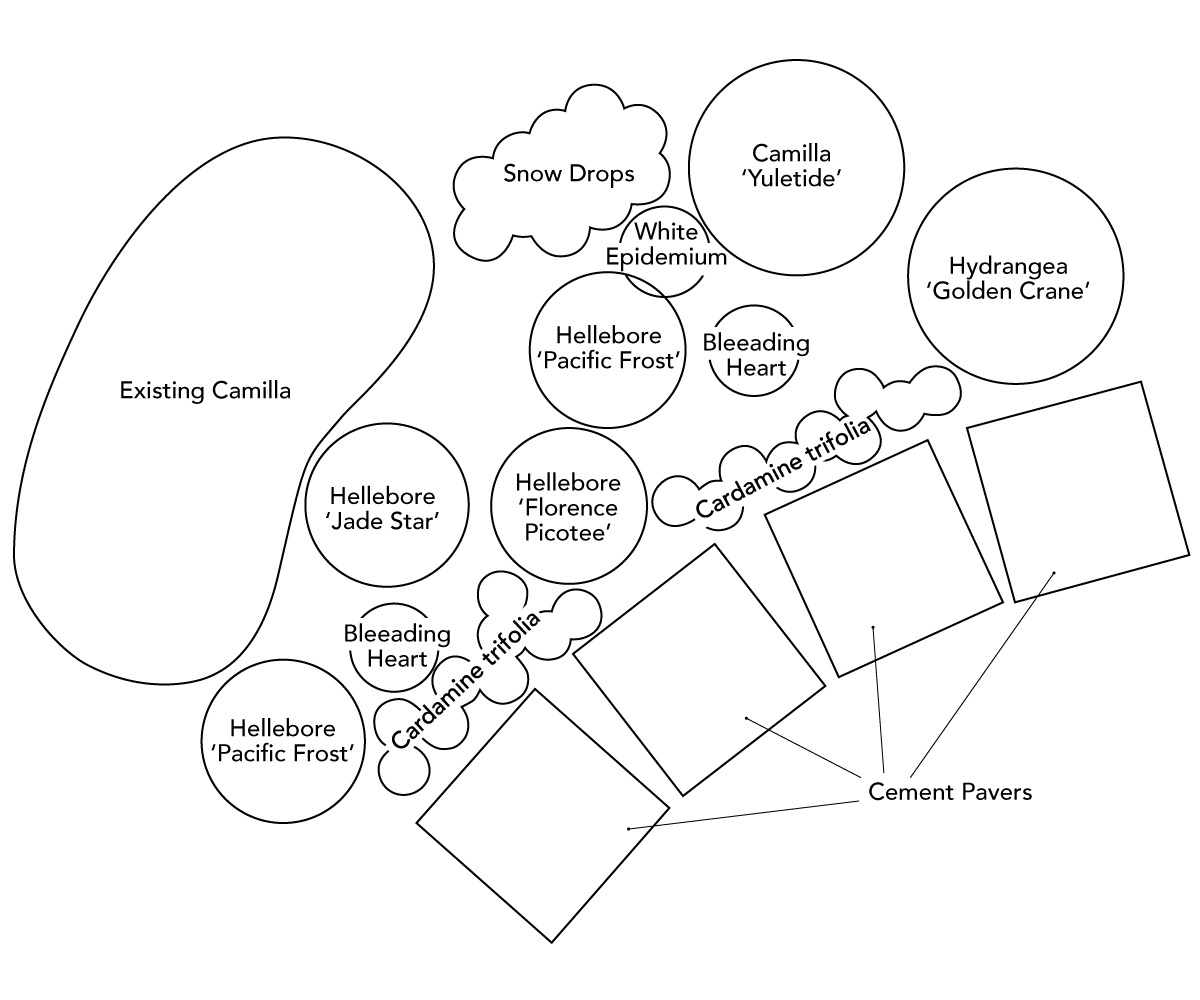
Reflect on design principles at work
Here’s how you can follow some of the design principles at work in this garden bed when designing your own: First, pick your color combinations and start at the bottom layer with a ground cover of that color. The second layer is next. Accent colors can take up to 50% of the space, and the rest should be composed of the main color, all with the same bloom time (spring). The final top layer can be composed of more plants that have that same main color, with 20% of the plants having that accent color. Remember to try some fun textures (grassy, glossy, variegated), and think about what it will look like in three months and then again in six months. Plan for foliage to provide interest and screening for months to come.
—Susan Calhoun is the owner of Plantswoman Design in Bainbridge Island, Washington.
Fine Gardening Recommended Products

Lee Valley Garden Knife
Fine Gardening receives a commission for items purchased through links on this site, including Amazon Associates and other affiliate advertising programs.

Corona E-Grip Trowel
Fine Gardening receives a commission for items purchased through links on this site, including Amazon Associates and other affiliate advertising programs.

Planting in a Post-Wild World: Designing Plant Communities for Resilient Landscapes
Fine Gardening receives a commission for items purchased through links on this site, including Amazon Associates and other affiliate advertising programs.




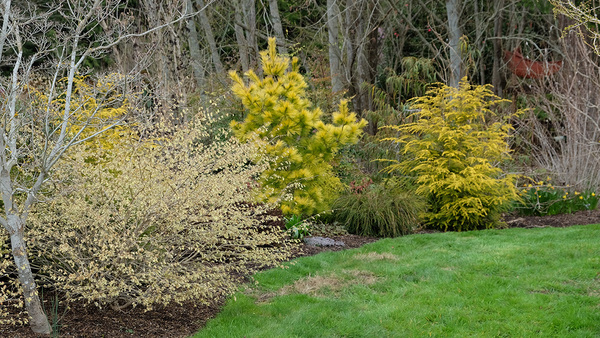














Comments
Log in or create an account to post a comment.
Sign up Log in